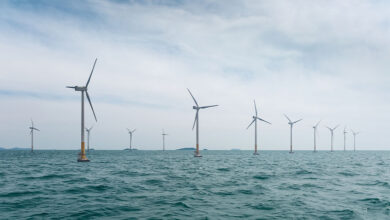Alex McLean on regional electricity market reform
 Alex McLean, Partner at Arthur Cox and Head of the firm’s Energy Group, examines the potential impact on the SEM of implementing the European Target Model.
Alex McLean, Partner at Arthur Cox and Head of the firm’s Energy Group, examines the potential impact on the SEM of implementing the European Target Model.
Integration of European energy markets is a cornerstone in the creation of a European Single Market. However, despite a process of reform of the internal energy market that began in the 1990s, concerns remain regarding regional monopolies, price differences and cross border congestion between member states. The Third Energy Package, implemented in 2007, contains a series of measures designed to address these issues.
The Target Model
A key mechanism adopted for the delivery of the internal market in electricity is the implementation of a common approach to electricity interconnector capacity allocation and congestion management. The EU Agency for the Cooperation of Energy Regulators (ACER), established under the Third Energy Package, published its Framework Guidelines on Capacity Allocation and Congestion Management (CACM) for electricity in July 2011 (Framework Guidelines). The Framework Guidelines elaborate a ‘Target Model’ which will require EU member states to conform to certain minimum criteria to facilitate the implementation of the internal market in electricity within the EU.
While the Target Model imposes certain requirements on domestic electricity markets within member states, it does not prescribe a homogenous market design for Europe. Rather it will require national electricity markets to adhere to minimum criteria across each timeframe (forward, day ahead, intra-day and balancing) resulting in a homogenous set of rules for the same product within markets and thereby facilitating cross-border trade.
Compliance with the Target Model is, however, much easier for those member states that have adopted a bilateral contracts market design, which is the predominant market design in Europe. The Single Electricity Market (SEM) in Ireland and Northern Ireland, on the other hand, is a mandatory gross pool market with centralised dispatch. This disparity between the SEM design and the predominant electricity market design in Europe poses certain significant challenges for the SEM in securing compliance with the Target Model, in particular in relation to the time periods in which firm prices are known.
The SEM is a wholesale mandatory pool market into which electricity generated on the island of Ireland (save for those generators that do not meet the de minimis threshold) must be sold. The market design incorporates an explicit capacity payment, with payments for energy based on the system marginal price (SMP). The SMP is calculated on an ex-post basis for each half-hour trading period. Firm prices are therefore not known until after the day on which electricity is generated and consumed. The SEM has no day ahead or intra-day market (although intra day trading at prescribed times is now being implemented). The Target Model changes this fundamentally with firm prices and quantities known in four day ahead or intra-day timeframes – all ahead of the current SEM timings. The Target Model will therefore require implementation of the following:
• forwards market, which clears before the day ahead stage;
• day ahead market, which is capable of being coupled through implicit auctions with other day ahead markets in the region;
• continuously traded intra-day market, which is capable of being coupled implicitly with neighbouring markets; and
• balancing or real time market.
Options proposed by the SEM Committee
On foot of the Framework Guidelines and the fact that the requirement that the Target Model becomes legally binding by 2014, the SEM Committee launched its Market Integration Project bringing together members of the regulatory authorities, the market operator (SEMO) and the system operators (TSOs) to examine the various options that would ensure compliance with the Target Model. In response to the difficulties that have been envisaged in achieving compliance with the Target Model, the ACER have permitted the SEM to adopt the Target Model by 2016.
The SEM Committee issued a consultation paper titled “Proposals for Implementation of the European Target Model for the Single Electricity Market” on 24 January 2012 in which it outlined four possible options for evolving the SEM in line with the Target Model. The four options outlined in the consultation paper were as follows:
Option 1 A limited bilateral contracts market in the forwards timeframe to allow for the use of Physical Transmission Rights (PTRs) (or forward financial contracts only if Financial Transmission Rights (FTRs) are adopted for the long term Target Model) with a day ahead market, implicit continuous inter-day trading and a balancing market.
Option 2 A pool market in the forwards timeframe, with a day ahead market, implicit continuous intra-day trading and a balancing market.
Option 3 A limited bilateral contracts market and a pool market in the forwards timeframe, with a day ahead market, implicit continuous intra-day trading and balancing market.
Option 4 Largely maintaining the current SEM structure and putting in a day ahead Contracts for Differences (CfD) market and continuously traded intra-day CfD market.
The four options seek to preserve the fundamental characteristics of the SEM to varying degrees. Options 1 and 3 represent very significant changes to the SEM, with Option 2 representing a moderate but significant change to the current regime. Option 4 attempts to deal with the challenges posed by day ahead pricing in a less radical way. However, CfDs can expose market participants to risks over which they have no control and a mitigating mechanism would need to be introduced to correct any imbalances.
The alternative to the evolutionary approach would be to replace the SEM with an entirely new market design by 2016. This so called process of “revolution” is also considered by the consultation paper in the event that the SEM Committee is unable to recommend that evolution of the SEM can be relied on to achieve compliance with the Target Model.
Conclusion
In determining the approach to take, the SEM Committee will have to balance the perhaps competing considerations of minimising adverse effects on market participants and consumers alike, whilst also complying with the minimum requirements of the Target Model. In the short term, any changes to the SEM will result in a degree of uncertainty and increased costs associated with implementing the new market mechanisms. However, in the long term, deeper market integration should deliver increased producer and consumer welfare, enhanced security of supply and facilitate the penetration of renewables in the market by facilitating cross-border trading of wind generation which is difficult to bid on a day ahead basis.
The SEM Committee, which has not been charged with an easy task in devising the future roadmap for the SEM’s integration into the greater European Network, indicated in the consultation paper that a decision would be issued by Quarter 2 2012. At the time of this article going to press a decision had yet to be issued.
Alex McLean is a Partner at Arthur Cox and Head of the firm’s Energy Group. He would like to acknowledge the assistance of Michael Caulfield of Arthur Cox in writing this article.





